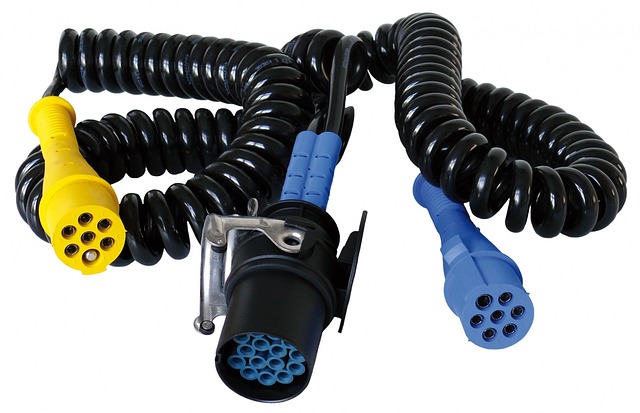Wireless access points (WAPs) face range and signal limitations, but structured cabling solutions offer a reliable alternative by providing consistent high-speed connectivity, minimizing interference, and maximizing coverage. Integrating structured cabling with WAPs creates a robust network infrastructure that meets current and evolving connectivity demands. Implement Cat6 or higher cables for increased bandwidth capacity, faster speeds, and better handling of high-demand tasks. Conduct site surveys, select suitable WAPs, use structured cabling, label connections, position WAPs strategically, monitor, and adjust for optimal network performance.
As wireless networks become increasingly essential, expanding coverage to meet the demands of modern connectivity is crucial. This article delves into the world of wireless access point (WAP) cabling, exploring how structured cabling solutions can transform network capabilities. We’ll examine the limitations of traditional WAPs and discuss the benefits of a well-designed cabling system for Wi-Fi networks. Additionally, best practices for implementing these solutions will guide readers in maximizing network performance.
Understanding Wireless Access Points and Their Limitations
Wireless access points (WAPs) are critical components in expanding network coverage, enabling connectivity for devices across large areas. However, they also come with inherent limitations that can hinder optimal performance. One of the primary challenges is range and signal strength; WAPs typically have a finite range, and obstacles like walls, floors, or other electronic devices can weaken the signal, leading to reduced speeds and unreliable connections.
Structured cabling solutions offer a robust alternative by providing reliable and high-speed connectivity. They involve the implementation of physical cables that ensure consistent network performance without the limitations of wireless signals. By integrating structured cabling with WAPs, organizations can create a seamless network infrastructure, catering to both current and future connectivity needs while ensuring minimal interference and maximum coverage.
The Role of Structured Cabling Solutions in Expanding Coverage
Structured cabling solutions play a pivotal role in expanding wireless access point (WAP) coverage, ensuring reliable and seamless network connectivity across vast areas. These comprehensive systems integrate fiber optic cables, switches, and connectors to create robust backbones that support high-speed data transmission. By employing structured cabling, networks can achieve greater range and improved performance, catering to the growing demand for ubiquitous Wi-Fi access.
Moreover, structured cabling enables efficient management and scaling of WAP deployments. With meticulously organized cables, network administrators can easily add or relocate access points, ensuring optimal signal distribution without compromising quality. This modularity facilitates future expansions, allowing organizations to adapt to changing network requirements and maintain a robust wireless infrastructure.
Benefits of a Well-Designed Cabling System for Wi-Fi Networks
A well-designed cabling system offers numerous advantages for Wi-Fi networks, enhancing overall network performance and reliability. By implementing structured cabling solutions, such as Cat6 or higher, you create a robust foundation for efficient data transmission. These cables provide increased bandwidth capacity, enabling faster internet speeds and smoother handling of high-demand tasks like streaming or online gaming.
Moreover, a structured cabling system ensures improved network coverage and reduced signal interference. Strategically placed access points connected via high-quality cables can expand Wi-Fi reach into previously unserviced areas, creating a more consistent and reliable wireless network throughout buildings or campuses. This results in enhanced user experience, with fewer dead zones and better connectivity for all devices.
Best Practices for Implementing Wireless Access Point Cabling
When implementing wireless access point (WAP) cabling, adhering to best practices ensures optimal network performance and minimizes potential issues. The first step is to assess your facility’s unique requirements through a thorough site survey. This involves identifying areas with weak signal strength, understanding physical obstructions like walls and floors, and mapping out the desired coverage area. Based on these findings, select WAPs that align with your needs, considering factors like speed, capacity, and range.
Structured cabling solutions play a crucial role in this process. Use high-quality cat6 or higher cables to connect each WAP to your network. Ensure proper labeling and documentation for easy troubleshooting. Positioning WAPs strategically within the coverage area, avoiding obstructions, and ensuring adequate spacing between them enhances signal strength and reduces interference. Regular monitoring and adjustments can further optimize performance over time.
In conclusion, expanding wireless coverage through strategic cabling is crucial for modern networks. By understanding the limitations of access points and leveraging structured cabling solutions, organizations can ensure seamless connectivity across vast areas. A well-designed cabling system offers numerous benefits, including improved signal strength, reduced interference, and enhanced overall network performance. Following best practices for implementation ensures optimal results, allowing businesses to harness the full potential of their Wi-Fi infrastructure.
